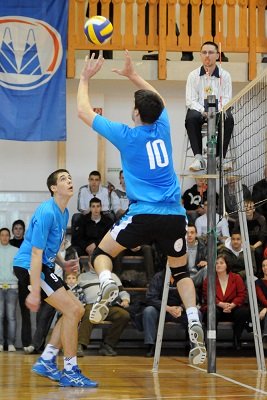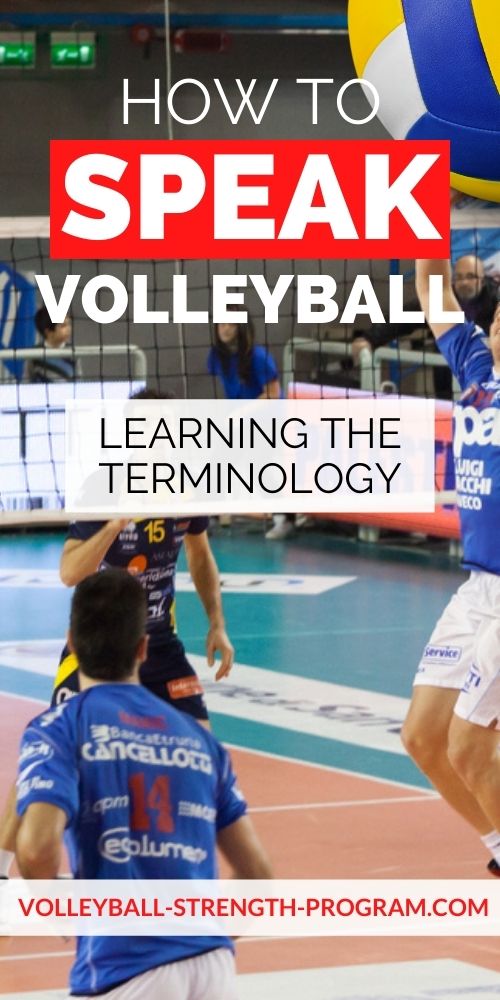Terminologies of Volleyball
Gain a better understanding by learning the terminologies of volleyball.
Switching in transition. This refers to players switching positions on the court. Players need to switch positions
in order to play their
specialized positions. Often, when a team is in serve receive, each
player won't always be lined up to play their position because of
overlapping rules.
Therefore, after a team receives the serve and successfully sends the
ball back over the net, players "switch" positions. This is known as
switching in transition.
Backcourt setter. There are 3 front row players and 3 back row
players in volleyball. The backcourt setter refers to the setter that is
setting out of the back row.
Serve receive formation. This refers to the formation the team lines up in during serve receive. Formations of 5 players, 4 players, 3 players, and sometimes 2 players are common in club volleyball.
6-2 offense. A team running a
6-2 means there are 2 setters and 6 hitters. Each setter plays opposite
the other. When one is on the front
row, the other is on the back row. The setter that's on the back row
usually sets. This way, there are 3 attackers on the front row.
5-1 offense. A team running a 5-1 offense has 5 hitters and just
one setter. The setter sets in every rotation, even when on the front
row. The
advantage of a 5-1 offense is the setter can attack at the net when on
the front row.
Overlapping and player alignment. At the moment of service contact, each player must be in the right rotation and not illegally overlapping.
Joust. When two opposing
players contact the ball above the net at the same time and the ball
comes to rest, this is known as jousting. Jousting counts as a block and
each player is
technically a blocker during a joust. Only front row players can block
or joust.
Strong side hitter. The strong side hitter is the player that
attacks from the left side of the court. This is also called the outside
hitter position.
This player needs to be confident spiking the ball because this player usually gets set the most balls.
This player usually gets set "out of system" sets when the team's offense is out of system.
Screen. When a team prevents the opponent from seeing the serve, this is known as screening. Screening is illegal and if the officials determine a team has committed a screen, this will
result in a loss of rally, point awarded to the opponent.
Off-speed attack. When a
player spikes the ball off-speed this is known as an off-speed attack.
Also sometimes called a roll shot. Players use the
roll shot technique for when it's important to make an accurate hit,
just placing the ball into the court. This can also be a way to deceive
the
opponent and catch the defender back on their heels.
Reading the opponent. "Reading" is referred to when a defensive
player has developed the skill to watch and predict what the hitter is
going to do. Reading is an important skill in
volleyball because the better a player is at reading the opponent, the
better the player will be at getting in position to make a play.
Of all the terminologies of volleyball, reading is extremely important to understand. Any time you are anticipating what is happening, you are reading. Anticipating what serve is coming, whether or not a hitter is going to hit hard or tip, being able to recognize there is a hole in the block....these are all examples of "reading" in volleyball.
If you enjoyed these tips and would like to keep it close to you at any time, just save this pin to your Pinterest Volleyball Training Board.
Terminologies of Volleyball Related Pages
Terminology
Volleyball terminology for understanding volleyball better. All coaches, players, and referees should know the following terms. Be a better coach and teammate
Court Dimensions
Volleyball court dimensions for competitions. High school, middle school, college, NCAA, USAV, and FIVB have rules and protocols for court dimensions.
Officials
Referees of volleyball. Duties and responsibilities of each official in volleyball. R1, first referee, R2, second referee, down referee, scorekeeper.
Player Positions
The main positions in volleyball are setter, libero, outside hitter, middle hitter, opposite, and defensive specialist. Each player has slightly different skills.
Terms
Volleyball terms for learning to play volleyball. Discover how to speak the language and use the correct lingo for...
Volleyball › Terminologies of Volleyball
ACCESS MY STRENGTH SECRETS





